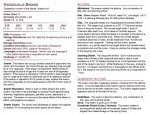An hour‽
My best advice is to look into Matt Coleville's Warfare rules. These are heavily abstracted rules for large-scale battles. It is included in the Strongholds & Followers book but he made this section open content and you can get the open content Warfare rules here:
https://www.dropbox.com/s/l300e96pe8s9pvz/warfare.pdf?dl=0
One issue with these rules for you may be that "individuals don't matter."
If you truly want to have your player's handful of powerful PCs against an army, I would just use the "Handling Mobs" rules in the Dungeon Master's Guide (DMG 250).
Basically, you determine the d20 roll each group needs to hit each PC and there is a simple table that tells you how many hit each round.
The example in the books is eight orcs surround a fighter. The orc's attack bonus is +5 and the fighters AC is 19. The orcs need a 14 or higher to hit the fighter. So if 3 orcs mob the player their is one auto hit.
For PCs they attack as normal. Casters with AOE spells are going to really be important, unless you are giving the other characters access to anti-siege weapons.
For ranged attacks I have no problem saying, well, there are 100 archers with long bows. They have a +6 attack bonus. The fighter as an AC of 21, the cleric has an AC of 19, the Wizard with Mage Armor has an AC of 15, the rogue has an AC of 16. So the to-hit the archers need for each is 15, 13, 9, and 10. According to the chart at DMG 250 that means for every four attackers that hit the fighter, one will hit. 3 attackers for 1 to hit the cleric. 2 for 1 hit on the wizard or the rogue. I would have all the arches go on the same initiative.
I might have them focus fire on the wizard and cleric first to take them out before their AOE spells decimate them.
For melee, however, my players are going to cry foul. I would just go by the rule that (assuming the PCs are medium creatures), 8 creatures can fit in a 5-foot radius around another one.
This will mean that very weak fighters will not be able to scratch a highly armored character. E.g. a commoner would need a 19 to hit, meaning you need 10 commoners to make one hit. What I might rule, however, is that if you have a huge mob of pitchfork wielding commoners, you still get the auto hits as long as 10 or more are surrounding you. Think of it like getting a flanking advantage or morale boost. This allows for a swarm of weak enemies to overtake even the strongest PC if he just wades into the sea of attackers for a melee fight. If the player cries foul, ask them if they'd rather you roll 8 times and apply any crits. Most would accept the trade off of auto hits and a faster combat.

